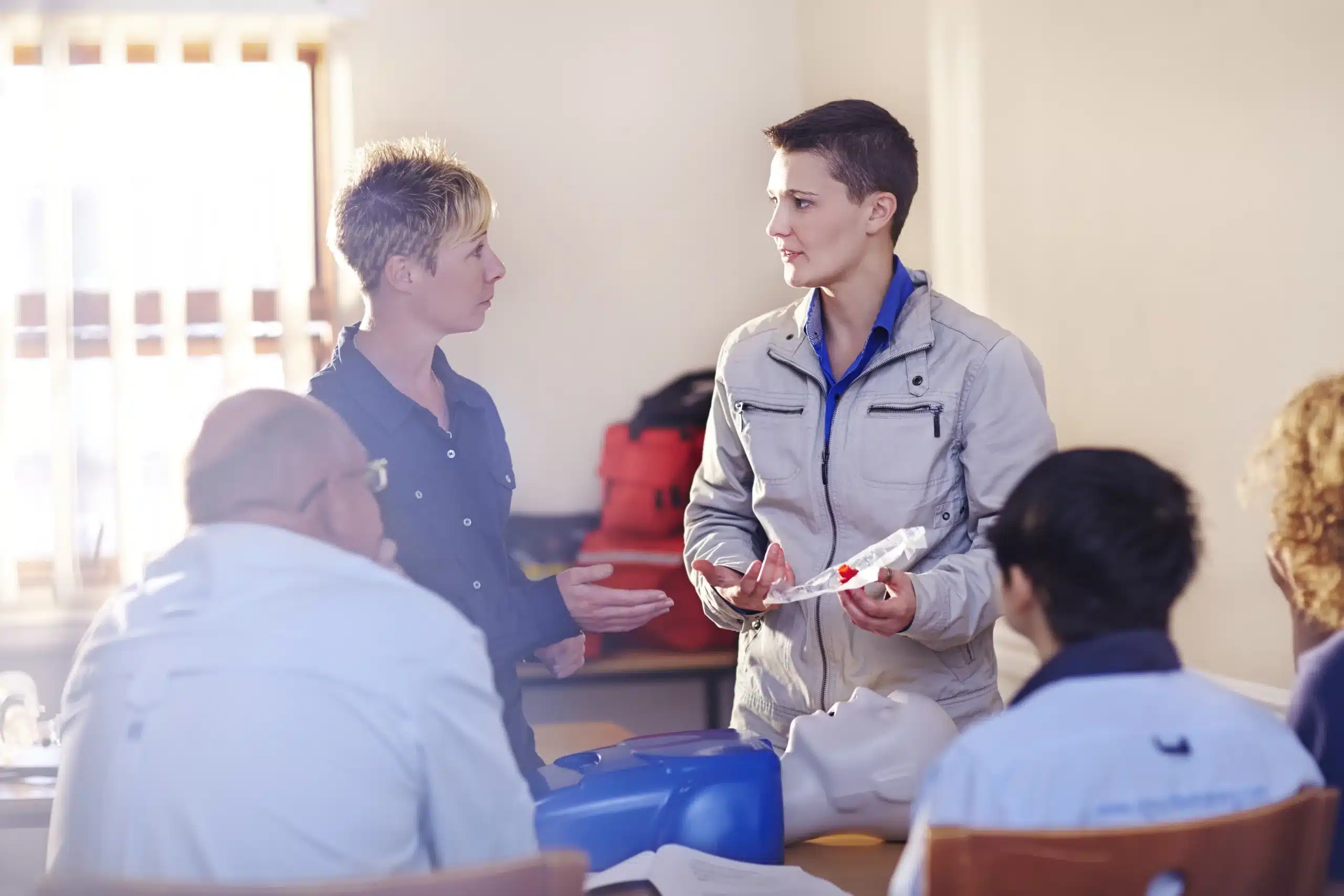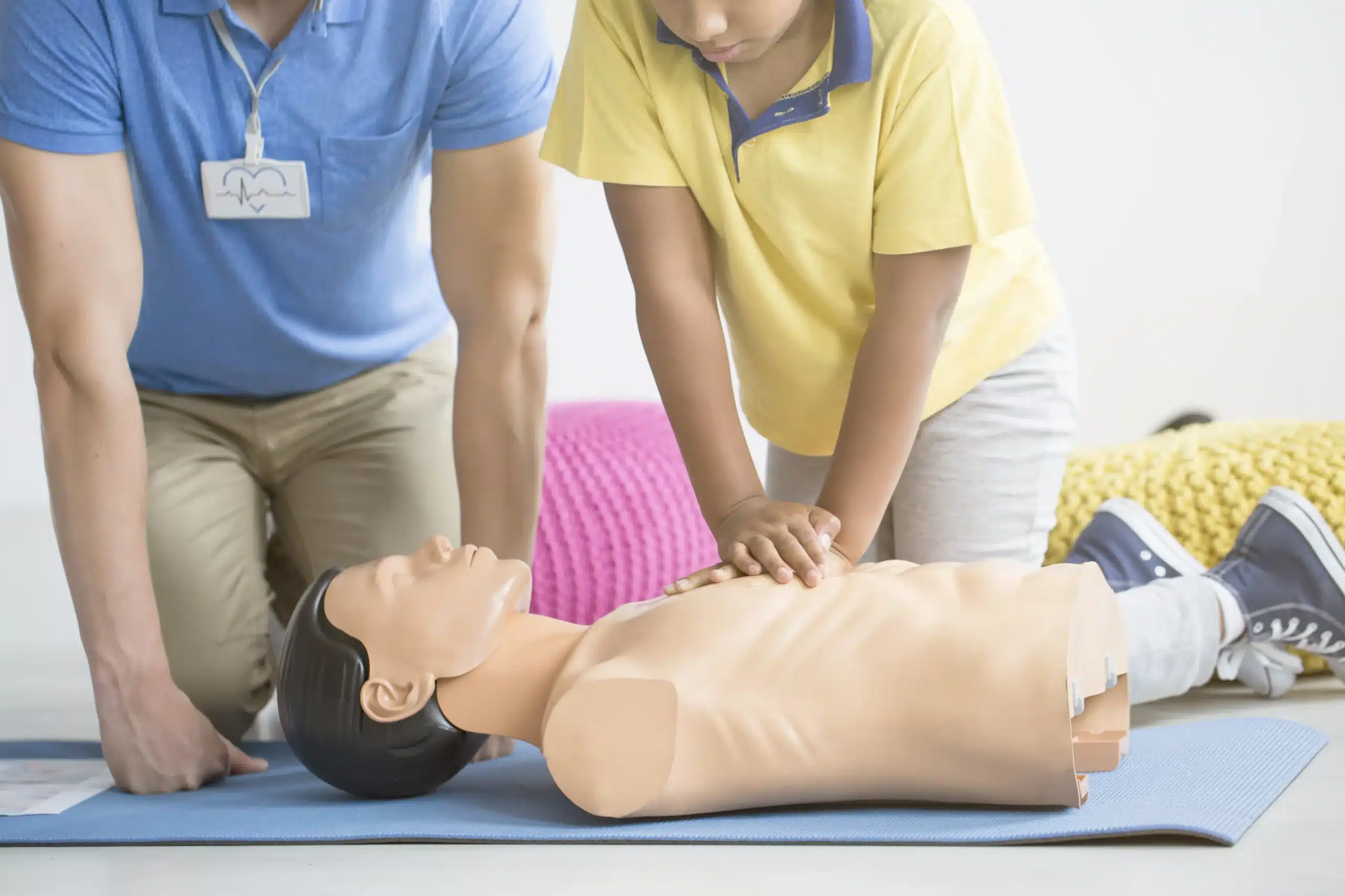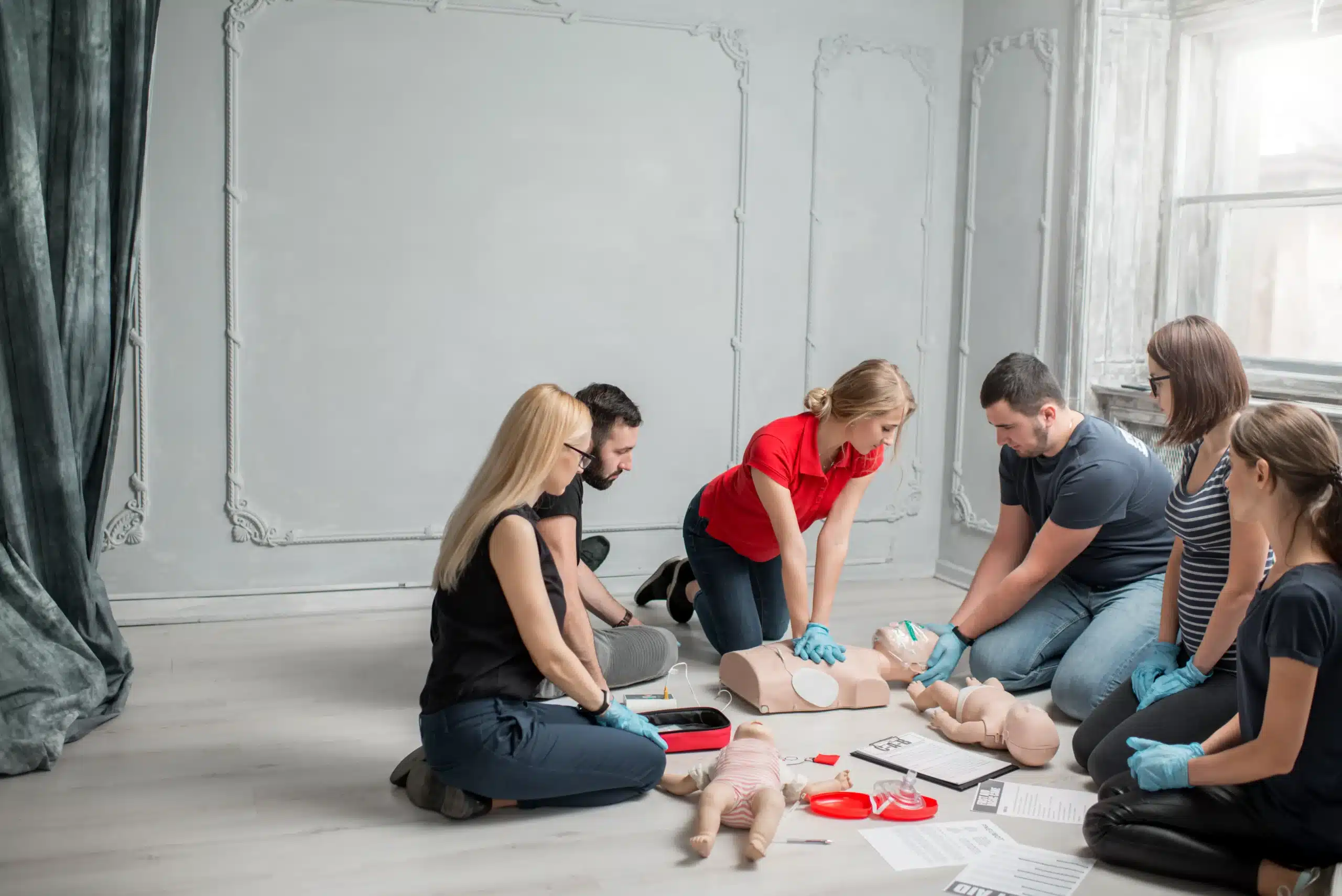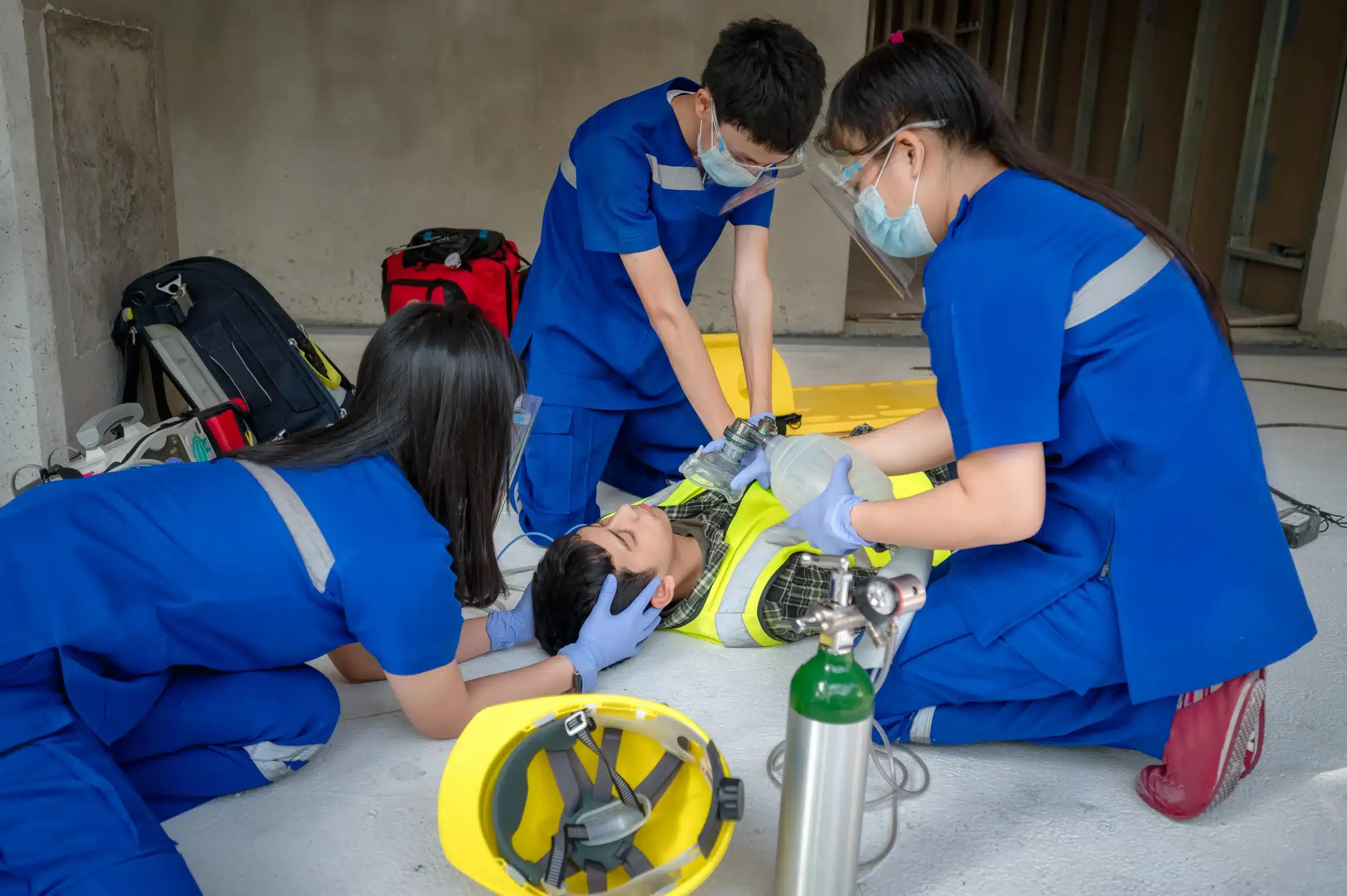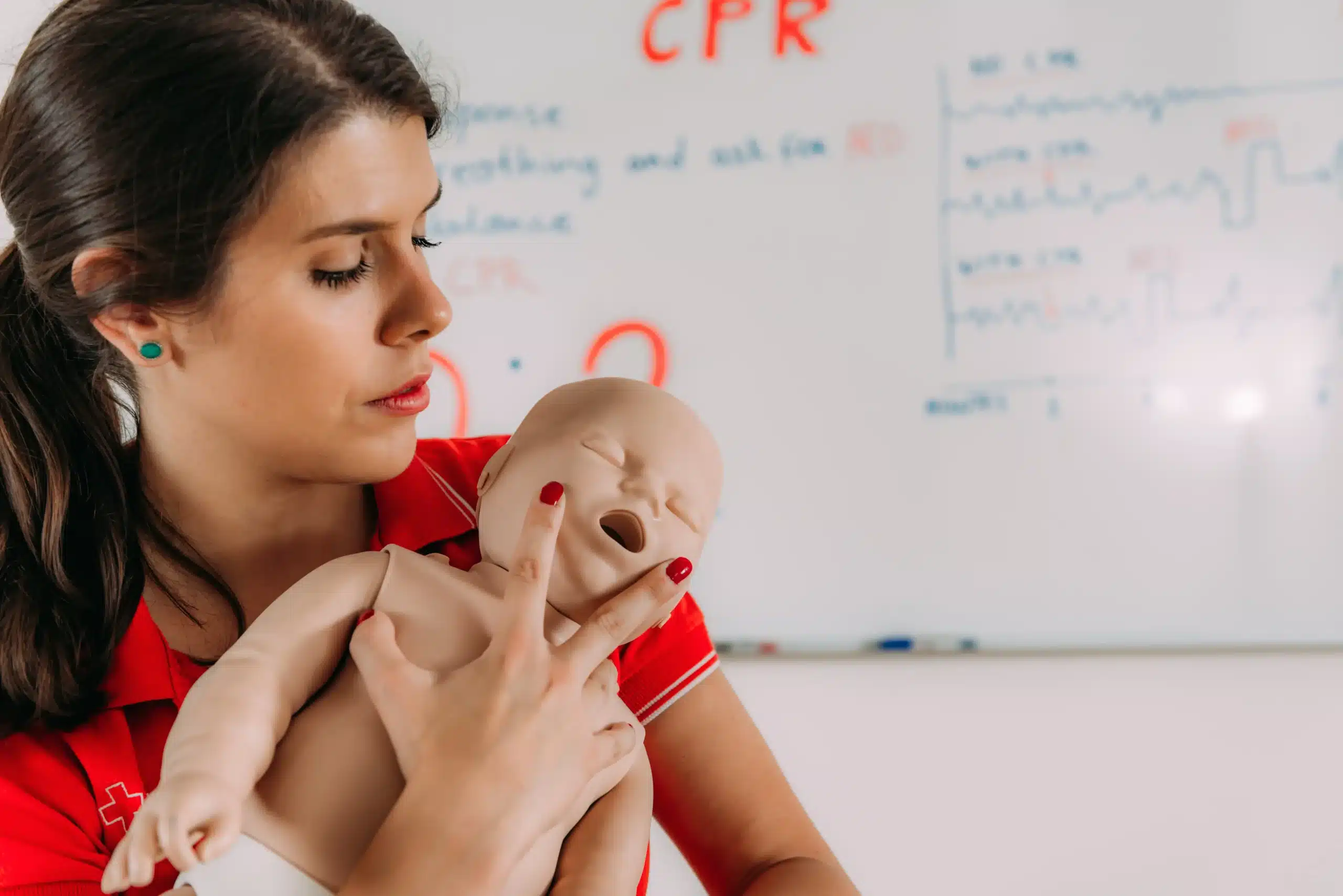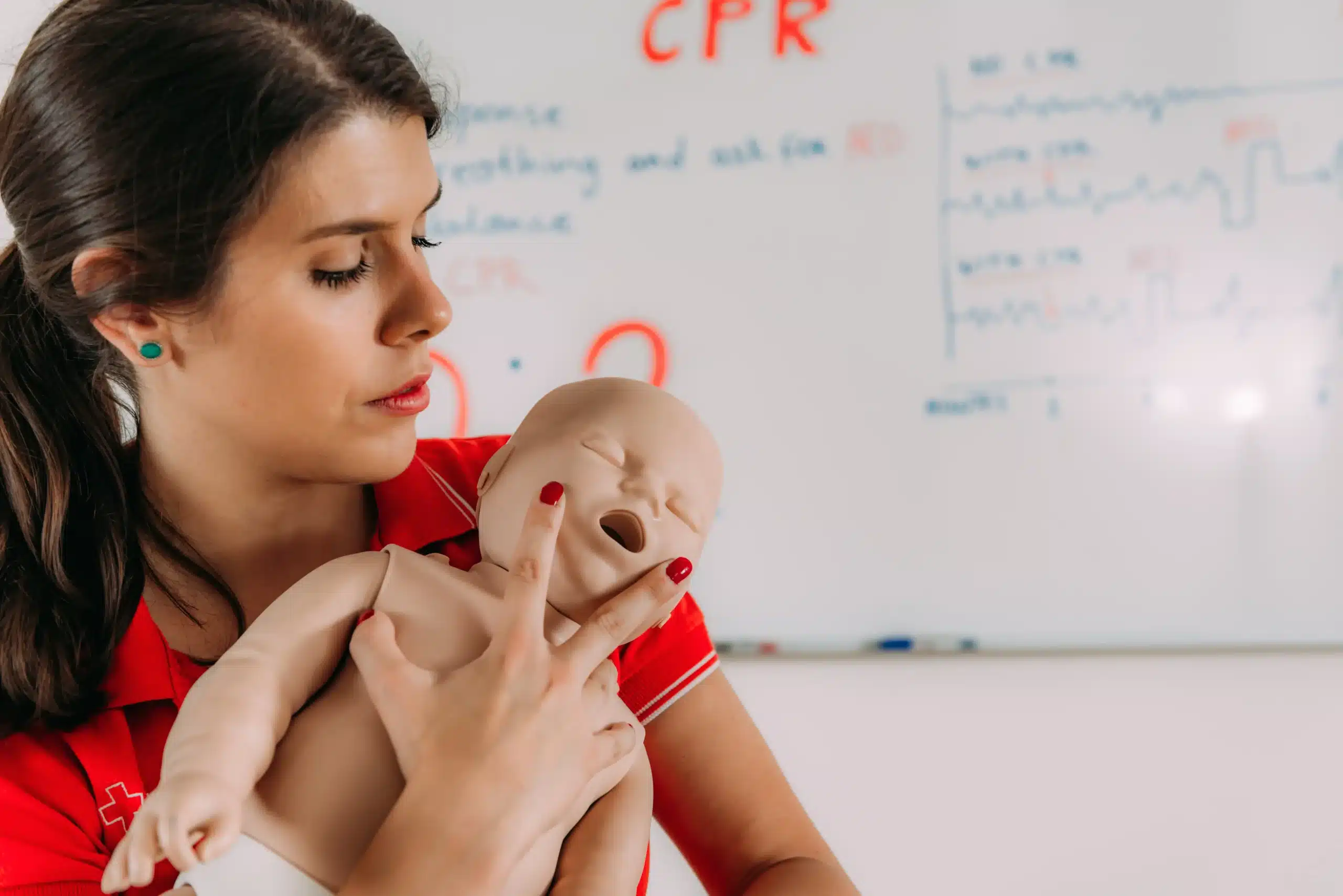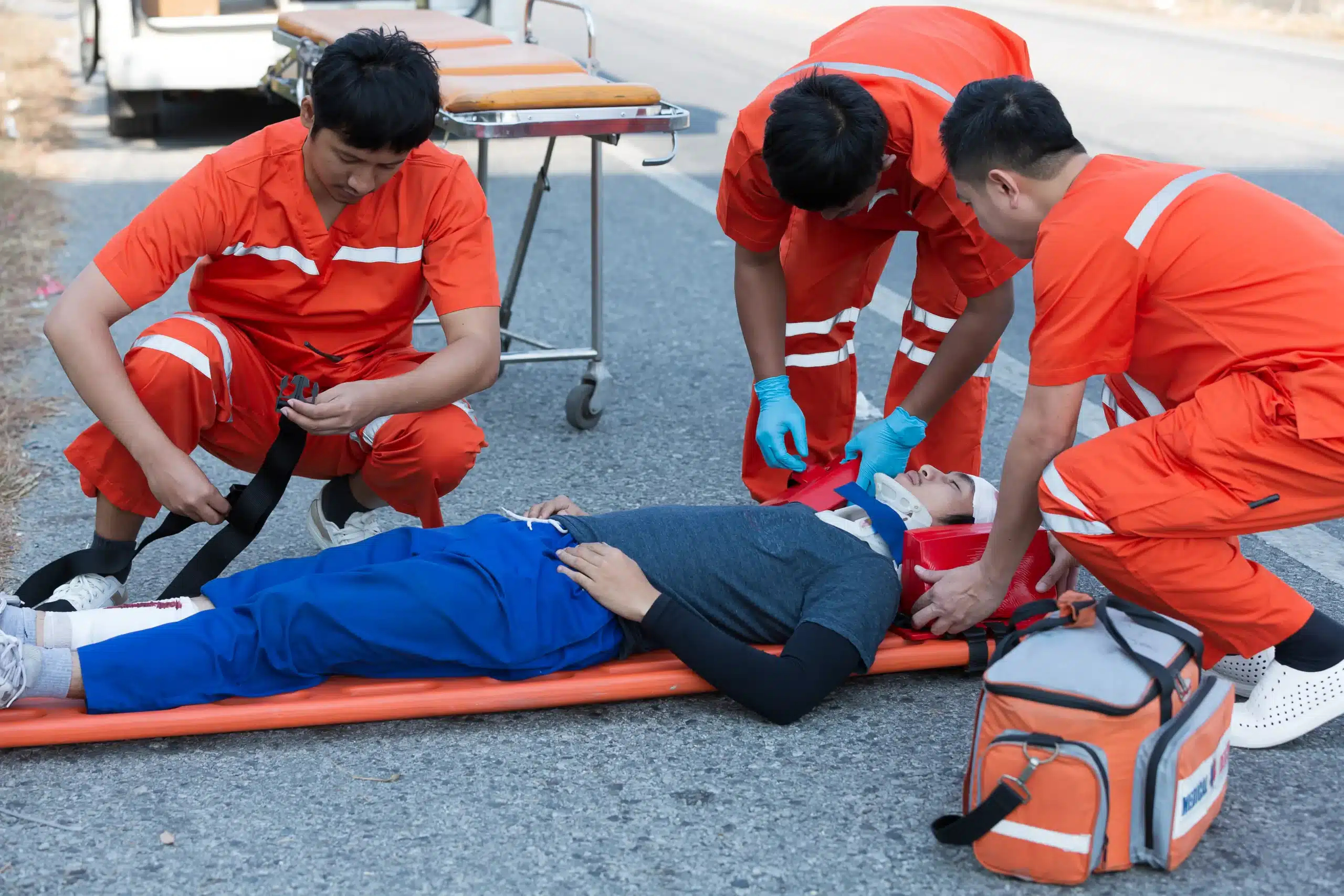Life has a way of throwing curveballs, and knowing how to handle medical emergencies is a skill everyone should have. Whether it’s a scraped knee, a burn, or something more serious, having first-aid training can make all the difference. If you’ve been searching for “first-aid classes near me,” you’re in the right place. This guide breaks down everything you need to know about first-aid training, from the different types of courses available to finding reputable providers in your area. We’ll cover CPR, basic life support, specialized training options, and even tips for making the most of your learning experience. Let’s get started!
Key Takeaways
- First-aid skills empower you in emergencies: Learn how to treat minor injuries and administer CPR effectively through certified training from providers like Safety Training Seminars or the American Red Cross.
- Select the right course format for you: In-person, online, or blended learning options cater to different learning styles and schedules. Consider your budget, preferred level of interaction, and convenience when choosing.
- Stay certified and spread the word: Keep your first-aid skills current by renewing your certification every two years. Share your knowledge and encourage others to get trained, creating a more prepared community.
What are First-Aid Classes?
First-aid classes equip you with the skills to respond effectively to medical emergencies. From minor injuries to life-threatening situations, these courses empower you to provide immediate care until professional help arrives. Learning first aid can make a real difference.
CPR and AED Training
CPR (Cardiopulmonary Resuscitation) and AED (Automated External Defibrillator) training are often key components of first-aid classes. CPR teaches you how to restore blood circulation and breathing, while AED training covers the safe use of a defibrillator to restore a normal heart rhythm. These skills are crucial for responding to cardiac arrest. You can find CPR and First-Aid certification courses in Carmichael, CA.
Basic Life Support (BLS)
Basic Life Support (BLS) certification goes a step further than standard CPR training. It’s designed for healthcare providers and professionals who need a more in-depth understanding of resuscitation techniques. BLS courses cover advanced airway management, team dynamics, and high-quality CPR. The American Heart Association BLS program, often delivered through the RQI (Resuscitation Quality Improvement) program, is a popular choice for medical professionals.
General First-Aid Courses
General first-aid courses cover a wide range of topics, including treating common injuries like cuts, burns, and sprains. You’ll also learn how to manage allergic reactions, recognize the signs of a stroke, and handle other medical situations. These courses are valuable for anyone, regardless of background. Safety Training Seminars offers a variety of general first-aid courses.
Specialized First-Aid Training
Depending on your interests or profession, you might consider specialized first-aid training. For example, those working in childcare can benefit from courses covering pediatric first aid and CPR. There are also specialized courses for wilderness first aid, workplace safety, and other specific contexts. Look for programs that align with your needs and provide relevant certifications, such as the EMSA Child Care Health & Safety program.
Find Reputable First-Aid Classes Near You
Finding the right first-aid class can feel overwhelming, but it doesn’t have to be. By following a few simple steps, you can find a reputable provider and feel confident in your training.
Search Online
Start your search online using search engines like Google or DuckDuckGo. Search for terms like “first-aid classes near me,” “CPR certification,” or “BLS training.” Look for providers with websites that clearly outline their courses, certifications, and instructor qualifications. Choosing the right training provider is crucial for accurate and effective training in life-saving techniques. Consider checking online directories or local community resources for recommendations.
Verify Provider Credentials
Once you’ve found a few potential providers, verify their credentials. Ensure the instructors are certified and experienced in emergency response. Check if the training center is affiliated with a recognized organization like the American Heart Association or the American Red Cross. Accreditation assures you that the curriculum and training delivery meet established standards. Look for providers with a solid reputation for comprehensive and up-to-date training. Carmichael CPR Classes, for example, highlights its low price guarantee and commitment to American Heart Association standards.
Evaluate Reviews
Before committing to a class, read reviews from past students. Online reviews offer valuable insights into the quality of instruction, course materials, and overall learning experience. When evaluating providers, consider their qualifications, reputation, course content, and evaluation methods. Look for comments that mention the instructor’s teaching style, the hands-on practice provided, and the clarity of the information presented. These real-world experiences can help you make an informed decision and choose a first-aid class that meets your needs. You might also find helpful information on community forums or social media groups dedicated to healthcare training.
Choose the Right Class Format
Finding the right first-aid class format depends on your learning style, schedule, and budget. Let’s explore in-person, online, and blended learning options to help you make the best decision.
In-Person Classes
In-person classes offer hands-on learning guided by a certified instructor. This format is ideal for people who thrive in interactive environments and appreciate direct feedback. You’ll practice skills in real-time, ask questions, and receive personalized guidance. In-person training ensures you meet professional licensing and OSHA requirements, which is often crucial for healthcare professionals and those in specific industries. This format also allows you to connect with fellow classmates, creating a supportive learning environment.
Online Courses
Online courses provide flexibility and convenience. You can learn at your own pace, fitting the training around your busy schedule and completing modules from anywhere with an internet connection. This format is often more affordable than in-person classes. However, online courses typically don’t include hands-on skill demonstrations, relying primarily on videos and simulations. While studies show online learning can be effective, check with your employer about the acceptability of online-only certification if your job requires it.
Blended Learning
Blended learning combines online and in-person training. You’ll benefit from the flexibility of online modules for theoretical concepts, followed by in-person sessions for practical skill development and instructor interaction. This format offers a comprehensive approach, enhancing learning outcomes by integrating self-paced online learning with hands-on practice. Blended learning is a great option for those who want a flexible yet thorough learning experience. Research highlights the effectiveness of this combined approach.
Compare Costs & Find Discounts
Knowing the price range for first-aid and CPR training can help you budget effectively. Plus, there are often ways to save, so let’s explore typical costs and available discounts.
Typical Price Ranges
Costs for CPR and first-aid certification vary depending on the course type and provider. Basic adult CPR classes typically cost between $20 and $55, while pediatric CPR training ranges from $25 to $40. A combined CPR and first-aid course usually falls between $40 and $60. For workplace training with eight or more participants, the per-person cost is often between $35 and $45. More advanced certifications like BLS CPR and AED typically cost around $79.95, with first-aid training adding another $20. You can find more information on CPR class costs here.
Group & Early Bird Savings
Many training centers offer discounts for group enrollments, making it more affordable to train your team. Check with your chosen provider to see if they offer group discounts or early bird registration savings. These discounts can significantly lower the cost, especially for businesses or community groups. Safety Training Seminars in Carmichael is one example of a provider offering such discounts.
Low Price Guarantees
Look for training centers that offer a low price guarantee. This ensures you’re getting the best possible value for your training. Safety Training Seminars, a woman-owned American Heart Association Training Center, offers a low price guarantee on their courses, including BLS, ACLS, PALS, CPR, and first aid. They also offer daily classes in over 60 cities, making it easier to find a convenient time and location.
Get Certified in First Aid
Getting your first-aid certification is a smart move. Whether you want basic knowledge or more advanced training, understanding the different certifications, their validity, and their benefits helps you make the right choice. Safety Training Seminars offers a range of first-aid and CPR certification courses to fit your needs.
Types of Certifications
Several organizations offer first-aid certifications, each with different levels of training. The American Red Cross offers a variety of courses, from basic adult and pediatric first aid to more advanced training. You can also find first-aid training through organizations like the National Safety Council and St. John Ambulance. Be sure to research the different types of certifications available to find the best fit for your goals. If you’re in the childcare field in California, check out our page on EMSA Child Care Health & Safety for relevant training information.
Validity & Renewal
Most first-aid certifications are valid for two years. After that, you’ll need to renew your certification to keep your skills current. Renewal requirements vary depending on the certifying organization, so check with your provider for specific details. Staying up-to-date on the latest first-aid practices is essential for providing effective care in an emergency.
Benefits of Certification
A first-aid certification offers several benefits. It equips you with the skills to respond confidently to medical emergencies. It can also meet OSHA and employer requirements for certain jobs. Plus, knowing you can help someone in need brings a sense of personal satisfaction. For those seeking the most affordable options, take a look at our low price guarantee. We’re committed to providing high-quality training at the best possible price.
What to Expect in Class
Knowing what to expect can help you feel prepared and confident on the day of your first-aid class. Here’s a glimpse into a typical class:
Course Structure & Duration
First-aid courses cover a range of topics, from CPR and AED use to treating burns, cuts, and other common injuries. You’ll also learn how to recognize and respond to emergencies like choking or a heart attack. Expect a combination of lectures, demonstrations, and hands-on practice. Similar to CPR Certification Dallas, Safety Training Seminars offers a variety of courses, including CPR and first-aid, BLS, and more. The length of your class will depend on the specific course you choose. Online courses offer flexibility and self-paced learning, accessible from your laptop or tablet, while in-person classes provide a structured learning environment. Safety Training Seminars offers daily classes in over 60 cities.
Hands-On Practice
Hands-on practice is a critical part of any first-aid class. You’ll have the opportunity to practice skills like CPR and bandaging on mannequins and with classmates. This practical experience helps build muscle memory and confidence, so you’ll be better prepared to act in a real emergency. Instructors are there to guide you, answer questions, and provide feedback. Carmichael CPR classes are taught by experienced professionals.
Assessments
Most first-aid courses include some form of assessment to ensure you’ve grasped the key concepts and skills. This might involve a written exam, a practical skills test, or both. Upon successful completion, you’ll receive your certification. Remember that certifications typically expire after two years, so plan to recertify to keep your skills current. Safety Training Seminars has a low price guarantee.
Prepare for Your First-Aid Class
Getting ready for your first-aid class isn’t just about showing up; it’s about setting yourself up for a positive learning experience. A little preparation beforehand can make a big difference in how much you absorb.
What to Bring
Keep it simple. Bring a notebook and pen to jot down important notes and key takeaways. Your phone can work too, but sometimes good old-fashioned pen and paper helps with memory retention. Also, remember any personal items you might need to stay comfortable throughout the class, like a water bottle or a light sweater.
Study Tips
While you’ll learn everything you need to know in class, previewing the first-aid course materials can give you a head start. Even better, try practicing basic skills with a friend or family member. This can help solidify the techniques before you even get to class. Online resources like videos and tutorials can also be helpful for visualizing different first-aid scenarios. And of course, active participation during the class itself is key—ask questions and engage in the hands-on practice. That’s where it all comes together.
Dress Code & Comfort
Dress comfortably. You’ll likely be moving around during practice sessions, so comfortable clothing that allows for a full range of motion is ideal. Closed-toe shoes are a must for safety reasons, especially during hands-on training. Think comfortable and practical—you’re there to learn, not make a fashion statement. A first-aid class at Safety Training Seminars is a relaxed and supportive learning environment. We want you to focus on absorbing the information and feeling confident in your new skills.
First-Aid Class Providers in Carmichael, CA
Finding the right first-aid class is easier than you think. Several respected providers offer training in and around Carmichael. Here are a few options to explore:
Safety Training Seminars
Safety Training Seminars, a woman-owned American Heart Association Training Center, offers a range of courses, including first aid, CPR, BLS, ACLS, and PALS. They emphasize convenience, with daily classes available in Carmichael and more than 60 other cities. They serve Carmichael, Rancho Cordova, and Fair Oaks. Check their website for the latest schedule and to register for a course.
American Red Cross
The American Red Cross is a well-known provider of first-aid and CPR training. They offer various courses, including CPR/AED, basic life support (BLS), and more specialized training. You can choose from online, in-person, and blended learning formats to fit your schedule and learning style.
American Heart Association
The American Heart Association also provides comprehensive first-aid and CPR training. They offer various certification levels, from basic first aid to advanced cardiovascular life support (ACLS). Look into their course offerings to find the right fit for your needs. They also offer classes in Carmichael.
Local Community Colleges
Community colleges often offer first-aid and CPR training through their continuing education departments. These programs can be a convenient and affordable option for residents. Check with colleges near you, such as American River College, to see what they offer. Sacramento City College also offers courses.
Hospitals & Medical Centers
Many hospitals and medical centers in the Carmichael area provide first-aid and CPR training to the public. These courses are often taught by experienced medical professionals and may offer specialized training relevant to healthcare settings. Contact local hospitals like Mercy San Juan Medical Center or Sutter Roseville Medical Center for more information. UC Davis Medical Center is another option in the Sacramento area.
Use Your First-Aid Training
Getting certified in first aid is an accomplishment—but it’s also a beginning. Your training opens doors to helping others and building a safer community. Here’s how to make the most of your new skills.
Real-Life Application
First-aid training gives you the confidence to act in emergencies. Whether it’s a minor cut or a major incident, you’ll be prepared to provide assistance. Knowing how to administer proper first aid can truly make a difference. Your skills can be applied in various settings, from the workplace to social gatherings, empowering you to help colleagues, friends, family, or even strangers. Basic first-aid training offers practical skills applicable in diverse situations. Remember, even seemingly small acts of first aid can have a big impact.
Continuing Education
First-aid certifications typically expire after two years. Staying current with the latest guidelines and techniques is crucial for providing effective care. Find a reputable provider, like Safety Training Seminars, that offers renewal courses and ensures your skills remain sharp. A quality course provider will offer training compliant with American Heart Association (AHA) standards at a reasonable price. Regularly reviewing your training materials and practicing your skills will also help you maintain your preparedness.
Share Your Knowledge
Becoming a certified first-aid responder is something to be proud of. Share your knowledge with others and encourage them to get trained, too. Talking about your experience can inspire others to take a first-aid course and contribute to a more prepared community. Dispelling common first-aid myths is a great way to start these conversations. You can also share resources and information about local training opportunities, such as those offered by Carmichael CPR Classes. By sharing your knowledge, you contribute to a safer environment for everyone.
Related Articles
- First Aid Training in Carmichael: Your Complete Guide
- Pediatric CPR & First Aid Classes in Fair Oaks – Carmichael CPR Classes
- CPR Training in Rancho Cordova: Your Guide – Carmichael CPR Classes
- BLS HeartCode Carmichael: Your Certification Guide – Carmichael CPR Classes
- Pediatric Advanced Life Support (PALS) in Rancho Cordova – Carmichael CPR Classes
Frequently Asked Questions
What’s the difference between CPR and first aid? CPR focuses specifically on life-saving techniques for cardiac arrest and breathing emergencies. First aid covers a broader range of injuries and illnesses, from minor cuts and burns to recognizing the signs of a stroke. Often, you’ll find combined CPR and first-aid courses that teach both skill sets.
How do I choose the right first-aid class? Think about your specific needs and learning style. If you learn best in a hands-on environment, an in-person class is probably a good fit. If you need more flexibility, an online or blended learning format might work better. Also, consider the cost, the provider’s reputation, and whether the certification aligns with your professional requirements.
How much do first-aid classes typically cost? Costs vary depending on the type of course and the provider. Basic first-aid and CPR classes can range from $20 to $70. More specialized training, like BLS, will typically be more expensive. Look for providers who offer discounts, like group rates or early bird registration.
How long are first-aid certifications valid? Most first-aid and CPR certifications are valid for two years. Check with your certifying organization for specific renewal requirements. It’s important to stay up-to-date with the latest guidelines to ensure you’re providing effective care.
What if I’m nervous about using my first-aid skills in a real emergency? It’s normal to feel a little apprehensive. Remember, the purpose of first-aid training is to equip you with the knowledge and skills to respond effectively. Regularly reviewing your training materials and practicing your skills can help build confidence. Even basic first aid can make a significant difference while waiting for professional medical help to arrive.


